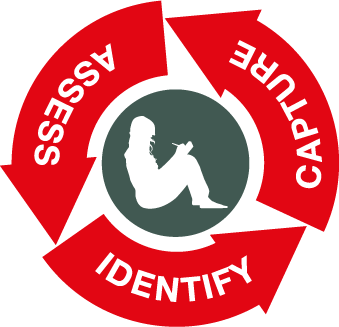e guide to Teaching Tricky Topics
Based on previous research (EU Juxtalearn, Target www.reachyourtarget.org, Tricky Topic Tool project) and in collaboration with Oxford University, this website provides resources to support teacher-training in schools, colleges, universities and other sectors. The guide is for trainee teachers or professional development of experienced teachers but can also be adapted for different contexts such as organizational learning and learning design.
These resources have been designed to help teachers to enhance students’ deeper understanding in difficult-to-learn STEM (Science, Technology, Engineering and Maths) subjects. They guide teachers through a process to identify, capture and assess difficult knowledge that causes barriers to their students’ understanding.

- Identify: A collaborative stage for teachers to identify the topics students find tricky and break those topics down into assessable parts (or stumbling blocks).
Resources needed for the process can be downloaded [LINK] - Capture: Teachers input their results from the ‘Identify’ stage into the Tricky Topic tool
[LINK]which helps them to understand why students find these topics tricky - Assess: Teachers use the insights from the Capture stage to develop questions which fully assess student understanding, create interventions that enhance students’ deeper learning and use the questions to evaluate the intervention. Visualisation of the results can provide detail of students’ depth of learning of individual stumbling blocks.
These resources are ideal for trainee teachers on a PGCE programme or for professional development of experienced STEM teachers. They can also be adapted for different contexts such as organizational learning and learning design of work-based innovations. The process is currently being embedded into Open University learning design methodologies and being trialled on science and mathematics modules. A learning design example is included in [LINK] [link to case studies/ examples].
Why is this guide necessary? The background to Tricky Topics
Learning progression for lower ability students is a significant problem, especially in STEM (Science, Technology, Engineering and Maths) subjects. This leads to poor subject uptake beyond compulsory education, resulting in skills shortages across many sectors. One reason learners fail to progress with difficult-to-learn subjects is the challenges involved in learning the troublesome knowledge that produce barriers to students’ understanding. Overcoming these barriers can be transformative.
Tricky Topics are topics that students struggle to understand. They are a practical application of Threshold Concepts which are defined at length in Meyer and Land, 2006.
The need to identify Tricky Topics and ‘why’ students did not understand these topics emerged through research with teachers at schools and universities across Europe (Juxtalearn) (www.juxtalearn.eu). This EU project identified a Taxonomy of Threshold Concepts (2013) that sought to explain the reasons that underpinned the difficulties students faced in overcoming threshold concepts through the identification of Stumbling Blocks. Following on from this work the OU has been working with teachers to develop practice-based applications for learning interventions using what the OU termed; ‘Tricky Topics’. In collaboration with Oxford University, the Institute of Educational Technology (IET) at the OU has developed a ‘Teaching Tricky Topics Process’ that is being trialled in schools and on PGCE teacher training courses in the UK. The approach is relevant for experienced and trainee teachers but also has applications in organisational settings.
The process’s simple structure (identify, capture and assess) provides an easy-to-apply format for overcoming Stumbling Blocks and informing the development of targeted interventions. Significant impact has already been seen across Europe. For example, in Portugal practitioners developed a teacher training programme based on the approach and Croatian teachers were enthused by the Tricky Topic approach for their practice during a knowledge exchange event at the OU. In the UK the process has been piloted with experienced STEM teachers from local schools and colleges, and Oxford University are working to embed the process into their PGCE course.
The role of technologies to facilitate Tricky Topic capture and assessment has also been incorporated into this innovative approach. The Teaching Tricky Topic process is currently being piloted in collaboration with Learning Design on the production of two STEM modules at the Open University. Additional activities are being pursued with Oxfam (organisational learning) and the College of Policing (simulation-based learning design). A Badged Open Course is also under development.
This website seeks to provide guidance and offer colleagues the opportunity to share their experiences on how the process is being used by a wide range of practitioners.
The Team
This project is funded by the ESRC’s Impact Accelerator Account and consists of:
The Open University’s Institute of Educational Technology team:
- Researchers: Dr Anne Adams, Dr Anne Pike, and Dr Gill Clough
- Learning Design expert Tom Olney,
- PhD student Popi Anastasiou,
EdTech designers: Kevin McCleod, Peter Devine, Ola Fadoju and Nick Freear,
The Oxford University’s Education department team:
- Dr Ann Childs
- Dr Katharine Burn
- Dr Judith Hillier
- Dr Emma Klose.


